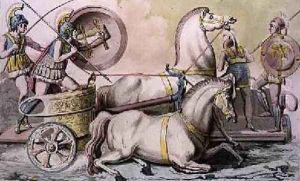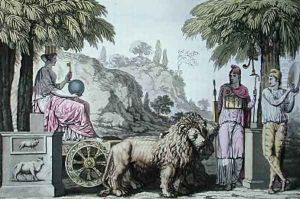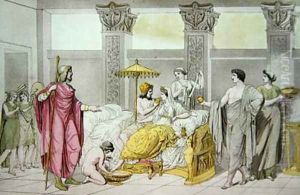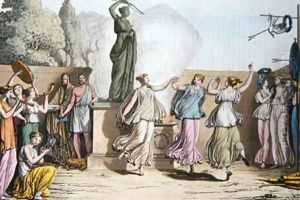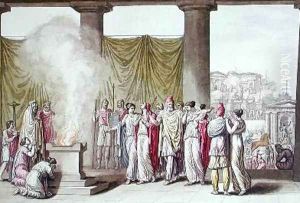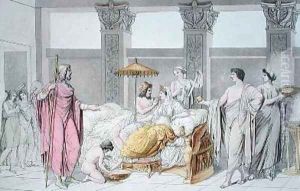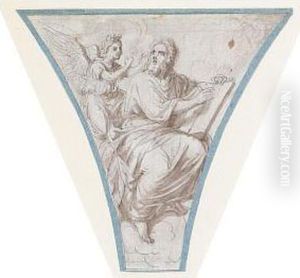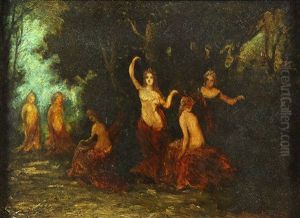Angelo Monticelli Paintings
Angelo Monticelli was an Italian painter born in 1778 in Milan, which was then part of the Duchy of Milan under Habsburg rule. He was known for his miniatures and watercolor paintings, particularly his floral pieces, which were highly regarded for their detail and vibrant colors. Monticelli's work reflects the transition from the neoclassical style, which was prominent at the time of his early career, to the romanticism that characterized his later works.
Monticelli received his artistic training at the Brera Academy, which was the main artistic institution in Milan. There, he was influenced by the works of neoclassical artists and the teachings of the academy, which emphasized the importance of drawing and the study of classical antiquity. Despite the neoclassical underpinnings of his education, Monticelli's style evolved to incorporate more romantic elements, which can be seen in his choice of subjects and the emotive qualities of his work.
Throughout his career, Monticelli developed a reputation for his miniature portraits and floral compositions. His miniatures were often commissioned by Milanese nobility and other patrons who appreciated the delicacy and finesse of his technique. Additionally, his floral paintings were sought after for their beauty and lifelike representation, making him a popular artist for decorative works.
Unfortunately, Monticelli's life was relatively short, and he passed away in 1837. His works, however, continued to influence other artists, particularly in the Milanese region. Although not as widely known as some of his contemporaries, Monticelli's contributions to the art of miniature painting and his role in the Milanese art scene of the late 18th and early 19th centuries remain significant. His paintings can still be found in various art collections and museums, where they are appreciated for their historical value and artistic merit.
